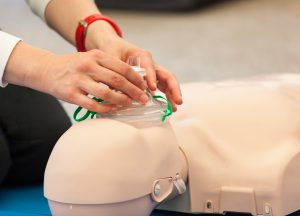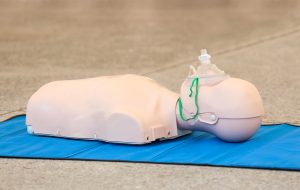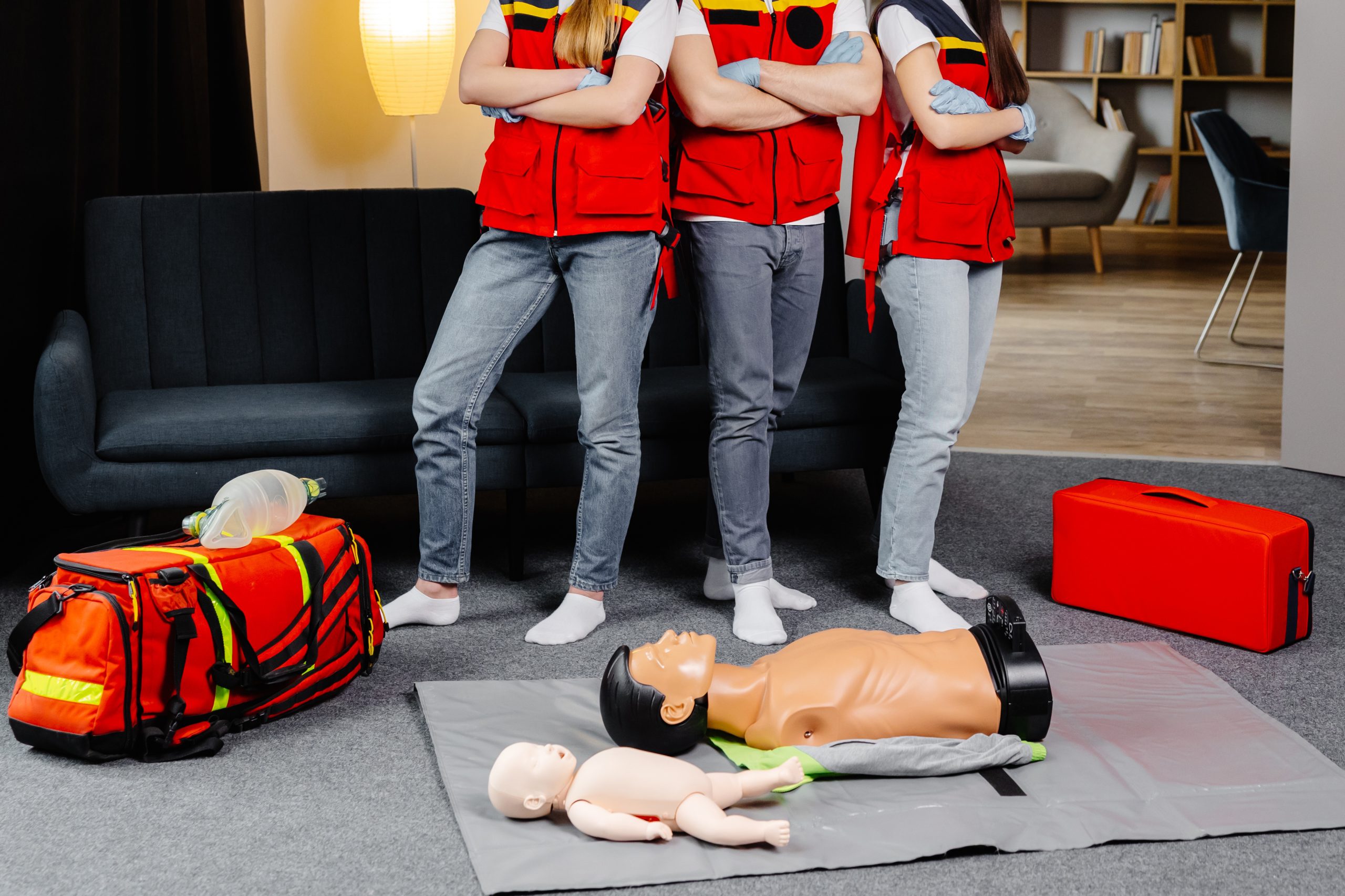You want clear, practical answers about cpr pocket mask use and what to buy, plus how to choose and care for manikins used in Canadian CPR training. This guide delivers quick steps, buying tips, and maintenance advice—without fluff—so you can make a confident choice today.
1) What is a CPR pocket mask and when do you use it?
A pocket mask is a compact barrier with a one-way valve and often an oxygen inlet. It helps you deliver rescue breaths while reducing contact with saliva or vomit.
Use cases include:
- Infants and children, where breaths are typically part of training protocols.

- Drowning or opioid-related emergencies, where ventilations may be required.
- When your course standards call for breaths, such as standard first aid or BLS scenarios.
Benefits at a glance: portable, hygienic, fits in a first aid kit, clearer seal than a flat face shield.
2) How do you use a pocket mask safely?
Practice these steps in class so they’re automatic under stress:
- Open airway: Head tilt–chin lift (or jaw thrust if spinal injury suspected).
- Position mask: Narrow end over nose, wide end over mouth; create a tight seal with both hands.
- Deliver breaths: Give 1 second per breath, just enough to see the chest rise.
- Watch for rise/fall: If no chest rise, reposition and try again.
- Resume compressions: Follow your training’s compression-to-ventilation ratio.
Pro tips:
- Use the oxygen inlet if available and trained to do so.
- Keep nitrile gloves with the mask.
- Replace damaged valves or masks; never use cracked or cloudy plastics.
3) What features should Canadians look for when buying?
Not all masks are equal. Look for:
- One-way valve + filter: Helps prevent backflow.
- O2 inlet port: Allows supplemental oxygen when your setting supports it.
- Hard case or clamshell: Protects the mask at the bottom of a bag or truck.
- Instruction card + head strap: Quick refreshers and hands-free stability.
- Transparent skirt: Lets you see lip colour and vomit.
Avoid ultra-cheap masks with flimsy skirts, no valve, or vague labelling. If you’re outfitting a workplace first aid kit, see this quick read on why pocket masks are considered essential PPE for certain attendants: Pocket Masks: Essential PPE for OFA Level 1 Attendants.
Ready to stock up? Shop CPR Depot Canada for reliable masks and training gear: cpr-depot.ca.
4) Do I still need a mask if I learned hands-only CPR?
Hands-only CPR is recommended for many adult sudden-collapse cases, especially for untrained bystanders. A pocket mask still matters when:
- Your training or local protocols require ventilations.
- The patient is a child or infant, or a drowning case, where breaths are typically included.
- You want added protection during team responses.
Carry one on your key ring or in a small pouch with gloves. You’ll never regret having it.
5) CPR Manikins Canada: What to Look For
When outfitting a class in Canada, focus on realism, durability, and hygiene.
Durability, feedback, and hygiene features
- Realistic recoil and chest landmarks: Encourage correct hand placement and depth.
- Audible/visual feedback: Clicks or LEDs help learners self-correct on depth and rate.
- Airway systems: Easy-swap lungs or bags reduce downtime between learners.
- Skin and face durability: Stands up to frequent cleaning and sunscreen/makeup transfer.
- Infant/child options: Scaled anatomy and appropriate chest stiffness.
- Storage/transport: Stackable torsos and rolling bags for instructors on the go.
6) How many manikins do I need for a class?
Class flow improves when learners have frequent hands-on time:
- Ratio guide: Aim for 1 manikin per 2 learners for skills practice. For testing, many programs prefer 1:1 to reduce cross-contamination and improve speed.
- Mix of sizes: Keep adult, child, and infant options if your course covers all ages.
- Spare parts: Extra lungs, faces, valves, alcohol wipes, and mats keep sessions on time.
If you travel to worksites or schools, consider a portable set with 4–10 torsos plus two infants. It covers most small-to-mid classes without overload.
7) How do you clean and maintain masks and manikins?
A little routine goes a long way:
Pocket masks
- After use/training: Clean per manufacturer guidance, then disinfect.
- Dry completely before storage; moisture degrades plastics and valves.
- Replace valves/filters on schedule or after known exposure.
Manikins
- Between learners: Wipe faces and chest surfaces with approved disinfectant.
- Daily or session end: Swap lungs/airways; wash removable faces as directed.
- Periodic checks: Inspect springs, chest plates, and electronics; update firmware on smart units.
Storage tips: cool, dry, away from UV. Label bins by size (adult/child/infant) and keep consumables with each set.
8) What Canadian guidance applies to PPE and training gear?
In Canada, follow the standards and course policies of your certifying body (e.g., community first aid, BLS) and your workplace or jurisdictional requirements. Many organizations expect:
- Barrier devices (like pocket masks or face shields) when breaths are part of the skill.
- Disposable lungs or equivalent hygiene controls for manikins.
- Documentation of cleaning steps for class audits.
If you teach OFA/WorkSafe or workplace programs, check provincial rules and course guides each year. When in doubt, contact your training partner or reach out to our team for current product labels and availability.
9) What’s a reasonable budget for masks and manikins?
Set expectations before shopping:
- Pocket masks: Budget-friendly when bought in multi-packs; pay a bit more for hard cases and O2 inlets.

- Basic torsos: Affordable, durable for large classes; usually include simple depth feedback.
- Smart manikins: Higher upfront cost but offer objective metrics (rate, depth, recoil) that speed testing and improve learner confidence.
- Consumables: Lungs, wipes, and faces are small per-unit costs that add up; buy in bulk for savings.
Tip: Start with a basic set sized to your class volumes, then add smart units for testing and instructor refreshers.
10) Where should I buy, and who can help me choose?
Reliable supply matters more than specs on paper. You want:
- In-stock gear that ships quickly across Canada.
- Clear product sheets and replacement parts you can actually get.
- Friendly support when a spring or valve goes missing the morning of class.
Get tailored advice and a fast quote: Contact CPR Depot Canada. Or browse current stock here: CPR Depot Canada.
Disclaimer
This article is general information for the Canadian context. Always follow your current course materials and the policies of your certifying body and employer.
FAQs
What’s the difference between a pocket mask and a face shield?
A pocket mask has structure, a one-way valve, and often an oxygen inlet, making a better seal than a flat shield. Face shields are ultra-portable but can shift more easily.
Can I reuse a pocket mask?
The mask body is reusable if intact; valves/filters may be single-use. Follow the product insert and replace any damaged parts.
How often should I replace manikin lungs?
Swap lungs/airways between learners or classes as your training policy requires. Keep extras ready to prevent delays.
Do I need different manikins for infants and children?
Yes. Infant and child manikins provide correct size, head tilt, and chest resistance so learners build accurate muscle memory.
Are smart manikins worth it for small programs?
For small classes, even one smart manikin helps standardize testing and coaching. Mix basic torsos for practice with a smart unit for assessments.


